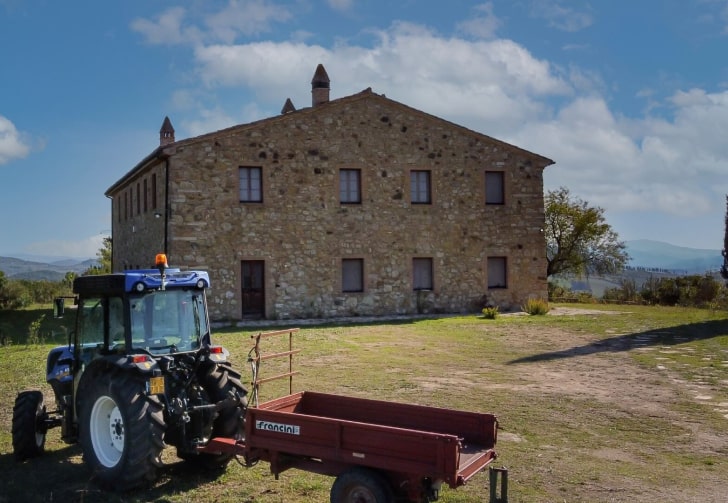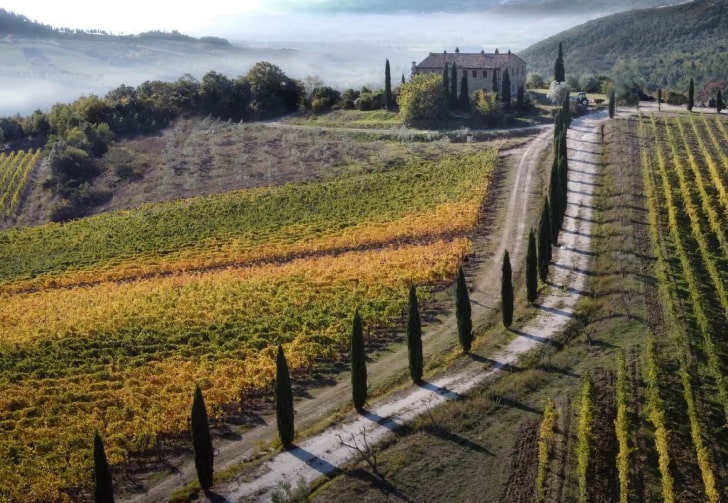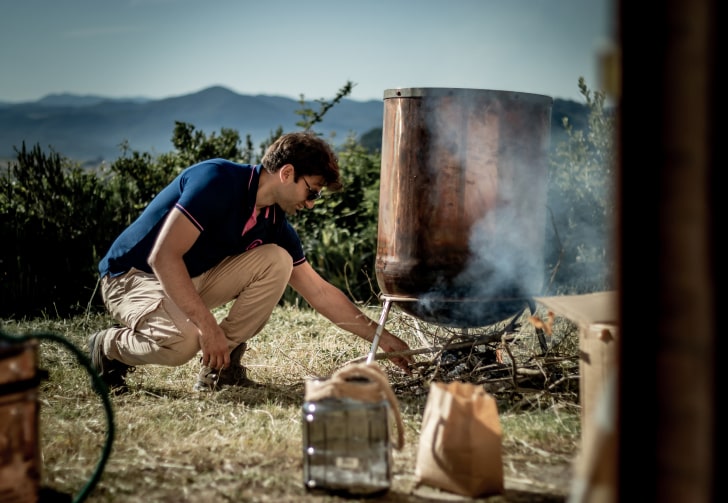Spirit of the Place
Colline Albelle is a jewel immersed in the heart of Tuscany.
A landscape of gentle hills dotted with vineyards and old olive groves, just a stone from the sea of Costa Toscana. A land full of open air masterpieces and treasures to look for.
The contact with nature through walks in Riparbella landscape is the key to recharging yourself and rediscovering your connection with nature, an ideal location for meditative contemplation, a balm for the mind, or more energizing activities and art related vacations. A harmony made up of boundless vistas and soothing sounds, such as that of the wind in the branches of centuries-old trees or the sound of waves crashing on the shoreline.
The constant is nature!
The New Old Story and a New Start
The project Colline Albelle started in 2016, during an encounter between three passionate wine producers in France and Bulgaria along with their families.
Their love for Tuscany brought them to discover the abandoned estate in Riparbella, a beautiful village on the hills above the Tuscan coast.
During the meticulous research another curious story appeared as an additional inspiration - the history of the near and very popular town of Bolgheri. It is said that the name derives from the term "Bulgari," which is the Italian word for "Bulgarians." This name dates back to the medieval period and is mentioned in a papal bull issued by Pope Gregory VII in 1075. The presence of a military camp of Bulgarians in the region is noted in historical records, indicating that Bulgarians were allies of the Lombards. During the medieval era, various groups and tribes moved and settled across Europe, often forming alliances or contributing to local dynamics. Old local people say that Bulgarians, as a group, had a presence in this area that eventually gave it the name of Bolgheri.


Riparbella
Riparbella, an ancient medieval village on the hills above Bolgheri is one of the just-emerging locales that is winning attention for the quality and distinctive personality of its wines. Lightly anthropized, it boasts a still preserved nature that over the last decades has assumed a model of organic and natural viticulture.

Our Inspiration
This unique location has inspired us, a team of international dreamers, shot through with determination and passion for a simple goal – to make exceptional wines that capture the wild beauty of the land and the spirit of the Tuscan coast.
Winemaking
The well-drained sandy soils, rich in pebble content, are the common thread in the high quality winemaking potential here. This is the common hallmark of a place where one has the impression of discovering an unknown and greatly preserved corner of Tuscany.
High Elevations
High elevations provide long days of crisp sunlight and difficult growing conditions create concentration and character. This gives our wines tremendous density and lively aromas
Coastal Influence
Coastal influence brings in cooling maritime winds and dense fog in the vineyard allowing the fruit to maintain balance and elegance while imparting a distinct coastal salinity in the wine.
The landscape & surroundings
Colline Albelle estate with its 18 ha of vineyards, olive groves and its own wood is at the very heart of Tuscany. It enjoys the full range of the incredible natural resources – from the endless picturesque landscapes with rolling hills of Mediterranean Forests, including the olives, vineyards, and a mix of the evergreen cypress, pine and oak, to the beautiful coastline along the Tyrrhenian Sea with its sandy sunny beaches and neat coastal towns. The estate is surrounded by some of the most impressive natural parks and reserves of Tuscany with protected areas that feature a diverse ecosystem with Mediterranean vegetation, wildlife, and bird species.
Overall, the Colline Metallifere is a region of great natural and historical significance, offering a unique blend of geological treasures, lush landscapes, and cultural heritage for those who venture to explore it.
How the Story of Colline Albelle Began
Etruscans have the greatest impact on the development of Roman culture, art, architecture, religion, politics and social life at all. Between 1925 and 1935, thanks to archeological excavations in the neighborhood of the nearest village - Riparbella, beautiful tholos-shaped tombs dated from V.-VI B.C. were found. It was then discovered that the hilltop of Villa Albella served as an important trade road linking the land to the sea, through which they transported the copper, silver and iron mined in the local mines. The written notes on the Villa Albella – Villae Albae appeared around 1186.


The inheritress, Baroness Maria-Giovanna Weihrauch Di Pauli von Treuheim, whose grandmother was born Espinassi Moratti, managed to make Villa Albella grow into a successful agriturismo where special attention was given to the authentic atmosphere of the estate, a property which has been in the family since over three centuries.
In 2004, the property was purchased by two Tuscan lovers, the writer Maricla Affatato and the filmmaker Enzo d’Alo. Together they administer the estate with its first harvest in 2005 under the name Poggioventoso. Because of the numerous activities and estate demands, they stopped taking care of the property in 2016 and left it abandoned.
Centuries later, in 1700 the noble family Espinassi Moratti took ownership of the villa. Their history was intertwined with the land, their legacy seamlessly merging with the age-old vines. Thanks to the irrigation works realized in XIXth c., Villa Albella property was transformed into fertile agricultural lands. With the introduction of new plants: corn, olive trees and vineyards. The Espinassi Moratti family's dedication to preserving the heritage of the region was evident in every meticulously restored room of the villa. The external elevations of the main Villa Albella buildings remain almost intact. The most important changes were introduced in the years 1850-1870 under N.H. Cav. Giovanni Battista Espinassi Moratti.

